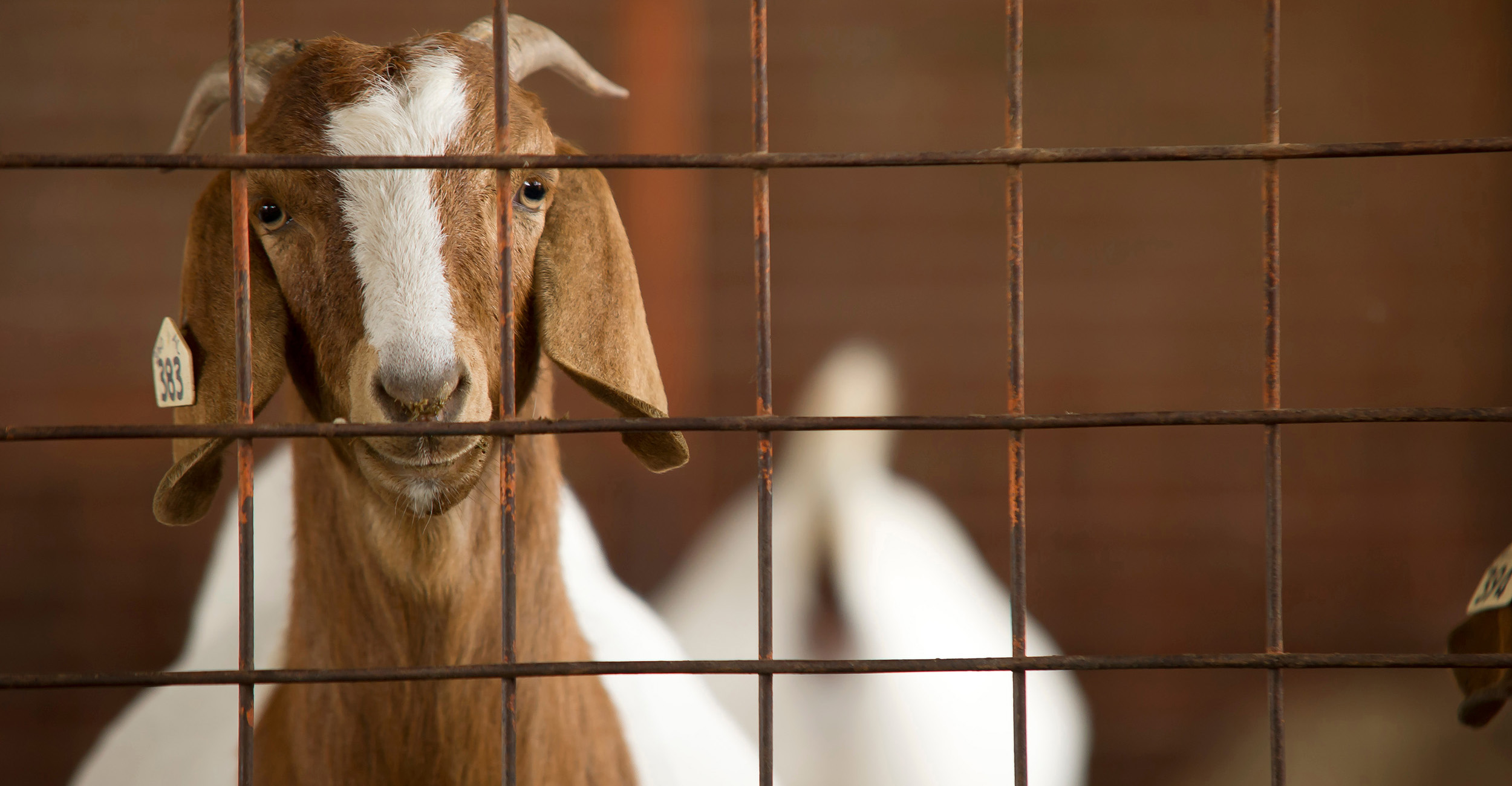
Meat-goat producers may want to take advantage of retained ownership opportunities
Friday, June 4, 2021
Media Contact: Donald Stotts | Agricultural Communications Services | 405-744-4079 | donald.stotts@okstate.edu
Owners of meat goats who manage their costs and maintain herd health should be in a good position to take advantage of strong returns in the market, said Oklahoma State University experts.
U.S. Department of Agriculture data shows Oklahoma had 84,000 meat and other goats in 2020, compared with about 79,000 at the start of 2021 as producers toughed out the COVID-19 pandemic. The ages-old economic interaction of prices rising in response to high demand and limited supplies is currently in play, said Scott Clawson, OSU Extension area agricultural economist for northeastern Oklahoma.
Meat-goat carcasses imported from Australia, New Zealand and Mexico typically remain at a high level to meet U.S. demand. However, the coronavirus pandemic disrupted shipping lines worldwide. In 2020, those imports declined 45% from 2019.
“Reductions in the number of animals have led to higher prices, which has some producers wondering if they can feed their spring-born goats to heavier weights and possibly make more money when the animals are sold,” Clawson said.
OSU Extension recommendations are to keep two important points in mind when considering that issue: First, retained ownership creates profit by taking advantage of a price spread — the difference between two prices — rather than a price level. Also, that the operation incurs a cost to add additional weight to its animals.
Resolving these important points can be difficult, in part because data for meat goats can be tough to gather. The first step is to determine the value difference between two weight classes.
- For example, if a goat’s starting weight is 40 pounds and the market is paying $4.59 per pound for that weight class, the result is a $183.60 sale price. If ownership is retained and the goat is fed out to 80 pounds, with the market paying $4.25 for that weight class, then the goat should sell for $340. The initial value difference therefore is $156.40.
Once that is determined, the producer will need to figure out what it costs to feed the goat to the desired weight.
- Continuing with the example above and assuming a feed cost of $400 per ton, or 20 cents per pound, with a conversion rate of five, the goat’s average daily grain should be about 0.4 pound per day.
“While goats and cattle are both ruminants, factors such as size difference can result in very different feed-to-gain conversion rates,” said Cody Linker, Lincoln County Extension Office agricultural educator. “A conversion rate of five with goats translates into 5 pounds of feed to add 1 pound of gain on the animal. For cattle, the conversion rate is lower. It’s important to maintain a two-to-one calcium-to-phosphorus ratio with both.”
- With the example 40-pound goat’s initial value of $183.60, and adding the assumed $40 feed cost calculation with other key considerations — for example, $15 for veterinary care, $5 for facility repairs and fencing, $9.18 for estimated death loss of herd animals and an obligatory $15 for other costs that might occur — retaining ownership and feeding out the goat to 80 pounds would result in a budget analysis of a $267.78 projected breakeven price or $3.35 projected breakeven per pound. Forage availability is assumed in the example.
“All things being equal, there seems to be an excellent opportunity for retained ownership given today’s marketplace for meat goats” Clawson said. “However, there are a few unknowns that producers need to consider.”
Clawson and Linker recommended producers be strongly conservative in their feed-cost calculations because feed conversion rates can be difficult to judge. Also, keep meticulous records of the livestock and management system used, and monitor forage conditions throughout the feeding period.
“Using current market reports to project future prices is always a bit of gamble,” Clawson said. “Late summer or early fall is typically the annual low-price-point for goats weighing 40-60 pounds. Heavyweight goats tend to exhibit less seasonal variation. A producer always needs to keep an eye on the cost position relative to his or her specific operation.”
OSU Extension recommendations are for producers to speak with local auction house operators and determine an approximate level of discount for their budget analyses. Clawson cited the example figures used above from San Angelo, Texas, one of the nation’s top goat markets. Local auction houses generally will discount the price.
Fact sheets detailing research-based recommendations for best goat management practices and livestock budget analyses are available online through OSU Extension and through OSU Extension county offices.
